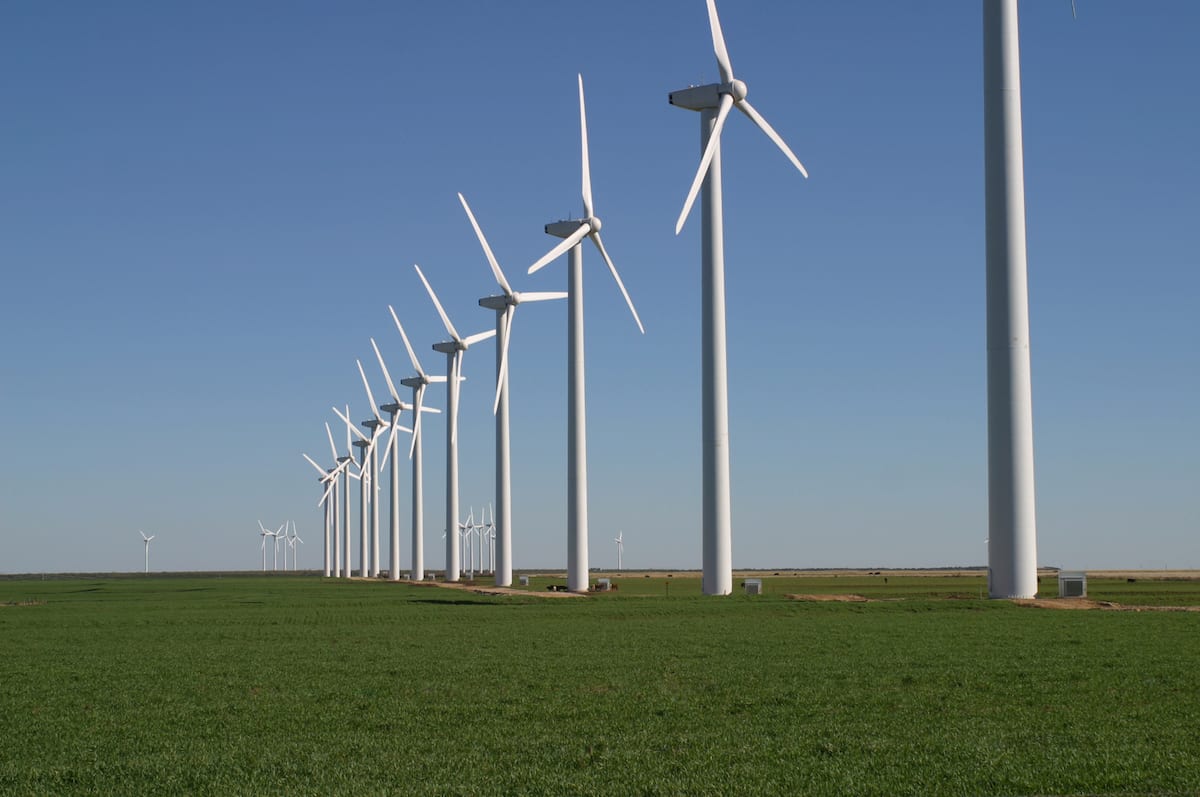
Europe can produce enough energy from onshore wind farms to power the whole world for the next 30 years, a new study shows.
British and Danish researchers found the continent could produce more than 100 times the energy it currently does from the farms.
Analysis by scientists at the University of Sussex and Aarhus University in Denmark identified three times as many areas suitable for turbines than previous studies.
They said more than 11 million additional wind turbines could be installed over 1.2 million acres (4.9 square kilometres) of suitable terrain.
This would generate 497 exajoule (EJ) of power – 67EJ more than the expected energy demand expected by 2050.
Study co-author Professor Benjamin Sovacool, of the University of Sussex, said: “Obviously, we are not saying that we should install turbines in all the identified sites but the study does show the huge wind power potential right across Europe which needs to be harnessed if we’re to avert a climate catastrophe.
“Our study suggests that the horizon is bright for the onshore wind sector and that European aspirations for a 100 per cent renewable energy grid are within our collective grasp technologically.
“The study is not a blueprint for development but a guide for policymakers indicating the potential of how much more can be done and where the prime opportunities exist.”
The paper, who has been published in Energy Policy, comes after Britain suffered a major blackout which caused travel chaos and affected nearly one million homes last week.
It happened after near simultaneous outages at a gas-fired power plant and an offshore wind farm caused the frequency to drop below National Grid’s safety limits.
The study claimed harnessing all of Europe’s untapped potential for onshore wind farms would produce 52.5 terawatt (TW) of power – equivalent to 1 megawatt (MW) per 16 European citizen.
The findings were based on analysis of Geographical Information System’s wind atlases.
The research team used more detailed maps to identify more than three times the wind power potential in Europe than in previous studies.
Breaking down the data to sub-national levels also allowed them to factor in more areas that weren’t suitable.
These included areas with houses, roads, restricted areas due to military or political reasons as well as terrains not suitable for wind power generation.
Turkey, Russia, and Norway have the greatest potential for future wind power density, according to the study.
Large parts of Western Europe were also considered ripe for further onshore farms because of favourable wind speeds and flat areas.
Peter Enevoldsen, assistant professor in the Centre for Energy Technologies at Aarhus University, said: “Critics will no doubt argue that the naturally intermittent supply of wind makes onshore wind energy unsuitable to meet the global demand.
“But even without accounting for developments in wind turbine technology in the upcoming decades, onshore wind power is the cheapest mature source of renewable energy, and utilising the different wind regions in Europe is the key to meet the demand for a 100 percent renewable and fully decarbonised energy system.”
Mark Jacobson, Professor of Civil and Environmental Engineering at Stanford University, US, added: “One of the most important findings of this study, aside from the fact that it concludes that the European onshore wind potential is larger than previously estimated, is that it facilitates the ability of countries to plan their onshore wind resource development more efficiently, thereby easing the way for commitments by these countries to move entirely to clean, renewable energy for all purposes.”
Renewables ‘better investment than carbon capture for tackling climate change’ click here